World War II
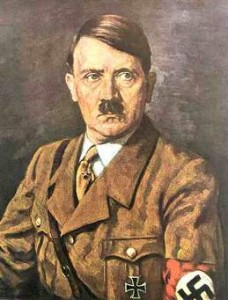
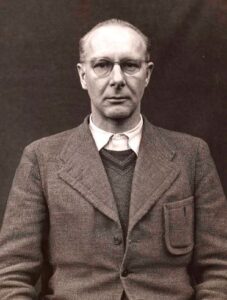 Until August 18, 1941, Adolf Hitler had been systematically murdering the mentally ill and developmentally disabled people in Germany, but word was getting out, and the “good” people of Germany were understandably outraged by such an evil practice. The people began protesting, and in an effort to avoid rioting, Hitler announced on this day in 1941, that the practice would cease. I’m sure the people were glad, and they most likely thought they had won this battle, but as we all know, Adolf Hitler is a man who lies…in fact it was all lies!!
Until August 18, 1941, Adolf Hitler had been systematically murdering the mentally ill and developmentally disabled people in Germany, but word was getting out, and the “good” people of Germany were understandably outraged by such an evil practice. The people began protesting, and in an effort to avoid rioting, Hitler announced on this day in 1941, that the practice would cease. I’m sure the people were glad, and they most likely thought they had won this battle, but as we all know, Adolf Hitler is a man who lies…in fact it was all lies!!
The killing began in 1939, when head of Hitler’s Euthanasia Department, Dr Viktor Brack oversaw the creation of the T.4 program. At first, the program began systematically killing of children deemed “mentally defective.” Children were transported from all over Germany to a Special Psychiatric Youth Department, after being told that the children were going to be treated there, but they were killed instead. Parents were told that their children had become ill, and simply died. Later, because of Hitler’s hatred mainly for Jewish people, certain criteria were established for non-Jewish children. Even if they “qualified” to be killed because of their mental issues, they had to be “certified” mentally ill, schizophrenic, or incapable of working for one reason or another before they could be killed. Jewish children already in mental hospitals, whatever the reason or whatever the prognosis, were automatically to be subject to the program and killed. The victims were either injected with lethal substances or were led to “showers” where the children sat as gas flooded the room through water pipes. Later the program was expanded to include adults.
As this practice continued, the people started getting angry, and before long protests began mounting within Germany, especially by doctors and pastors. A few of these people even had the courage to write Hitler directly and describe the T.4 program as “barbaric” but others circulated their opinions more discreetly. Heinrich Himmler, head of the SS and the man who would direct the systematic extermination of European Jewry, had only one regret: that the SS had not been put in charge of the whole affair. “We know how to deal with it correctly, without causing useless uproar among the people.”
In 1941, when Bishop Count Clemens von Galen denounced the euthanasia program from his pulpit, Hitler decided that he did not need such publicity. He ordered the program suspended but didn’t tell the German people that the suspension was only to be in Germany. Still, even though it was suspended in Germany, 50,000 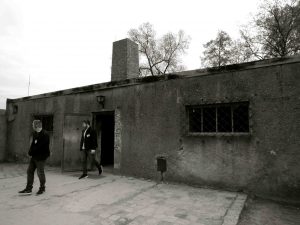
 people had already fallen victim to the hideous program. Then came the “other shoe dropping” as the practice was picked up in earnest in occupied Poland. Hitler was a liar, and he was evil. He assumed that the people of the world were stupid, and he could hide his horrific practice from them. Stopping the practice in the name of humane practices…not!! Lies!! All of it!!
people had already fallen victim to the hideous program. Then came the “other shoe dropping” as the practice was picked up in earnest in occupied Poland. Hitler was a liar, and he was evil. He assumed that the people of the world were stupid, and he could hide his horrific practice from them. Stopping the practice in the name of humane practices…not!! Lies!! All of it!!
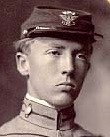
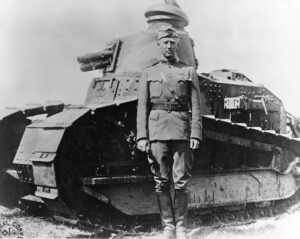 There are men of war, and then there are men of war. United States General George S Patton was the latter…meaning that he almost lived for war. Patton was a man who came from a long line of military people, and while he wasn’t always a tactful man, he was a great warrior…a fact that he proved over and over again. Many people didn’t like him much, but they couldn’t deny his capabilities. Patton was a great leader, but he wasn’t really a people person, and that got him in some trouble.
There are men of war, and then there are men of war. United States General George S Patton was the latter…meaning that he almost lived for war. Patton was a man who came from a long line of military people, and while he wasn’t always a tactful man, he was a great warrior…a fact that he proved over and over again. Many people didn’t like him much, but they couldn’t deny his capabilities. Patton was a great leader, but he wasn’t really a people person, and that got him in some trouble.
George Smith Patton Jr, who was born to George Smith Patton Sr and his wife, Ruth Wilson, the daughter of Benjamin Davis Wilson on November 11, 1885, in San Gabriel, California. Maybe because of his family history, or maybe it was just him, but Patton never seriously considered a career other than the military. At the age of seventeen he tried for an appointment to the United States Military Academy at West Point, New York. He also applied to several universities with Reserve Officer’s Training Corps programs, and was accepted to Princeton College, but eventually decided on Virginia Military Institute (VMI), which his father and grandfather had attended. Later, after studying at West Point, he served as a tank officer in World War I. Patton loved the tank, and his time as a tank officer, as well as his military strategy studies led him to become an advocate of the crucial importance of the tank in future warfare. When the United States entered World War II, Patton became the logical choice for the command of an important US tank division, and his division played a key role in the Allied invasion of French North Africa in 1942. Then, in 1943, in the Allied assault on Sicily, Patton and the US 7th Army in its assault on Sicily and won fame for out-commanding Montgomery during their pincer movement against Messina. Patton loved competition, and this was his chance to shine. On August 17, 1943, Patton and his 7th Army arrived in Messina several hours before British Field Marshal Bernard L Montgomery and his 8th Army, winning the unofficial “Race to Messina” and completing the Allied conquest of Sicily.
Although Patton was one of the most capable American commanders in World War II, he was also one of the most controversial. Patton was a “pull yourself up by your bootstraps” kind of guy, and therefore had no personal understanding of fear or fatigue. PTSD, battle fatigue, or shell shock were conditions he could not accept in anyone. In fact, they infuriated him so much that he actually slapped two soldiers who were suffering with the conditions. During the Sicilian campaign, Patton generated considerable controversy when he accused a hospitalized US soldier suffering from battle fatigue of cowardice and then personally struck him across the face. The famously profane general was forced to issue a public apology and was reprimanded by General Dwight Eisenhower. They would have liked to “walk away” from Patton, but when it came time for the invasion of Western Europe, Eisenhower couldn’t find a general as formidable as Patton, so, once again Patton was granted an important military post. In 1944, Patton commanded the US 3rd Army in the invasion of France. Then, in 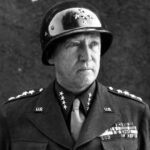
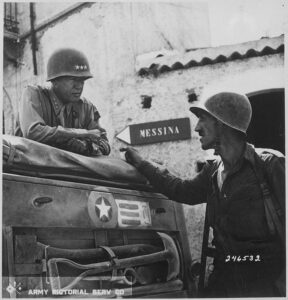 December of that year Patton’s great expertise in military movement and tank warfare helped to crush the German counteroffensive in the Ardennes.
December of that year Patton’s great expertise in military movement and tank warfare helped to crush the German counteroffensive in the Ardennes.
During one of his many successful campaigns, General Patton was said to have declared, “Compared to war, all other forms of human endeavor shrink to insignificance.” Patton died in a hospital in Germany on December 21, 1945, from injuries sustained in an automobile accident near Mannheim. He was just 60 years old.
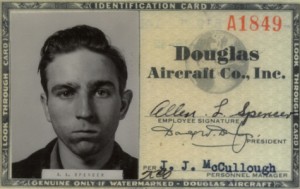 My dad, Allen Spencer, went to work for Douglas Aircraft Company on May 19, 1942. He was a young man of just 18 years. Dad wasn’t with Douglas Aircraft Company for very long, because of World War II, and his enlistment in the Army Air Force on March 12, 1943. Nevertheless, the job my dad had while he was at Douglas Aircraft Company would play a big part in his future military assignment as a flight engineer on a B-17 Bomber during World War II, stationed at RAF Great Ashfield in Suffolk, England. Because of Dad’s job there, I have always had an interest in Douglas Aircraft Company.
My dad, Allen Spencer, went to work for Douglas Aircraft Company on May 19, 1942. He was a young man of just 18 years. Dad wasn’t with Douglas Aircraft Company for very long, because of World War II, and his enlistment in the Army Air Force on March 12, 1943. Nevertheless, the job my dad had while he was at Douglas Aircraft Company would play a big part in his future military assignment as a flight engineer on a B-17 Bomber during World War II, stationed at RAF Great Ashfield in Suffolk, England. Because of Dad’s job there, I have always had an interest in Douglas Aircraft Company.
While people might think they don’t know much about Douglas Aircraft Company, they really do, just under a different name. The Douglas Aircraft Company was an American aerospace manufacturer based in Southern California. It was founded in 1921 by Donald Wills Douglas Sr and later merged with McDonnell Aircraft in 1967 to form McDonnell Douglas. With that merger, Douglas Aircraft Company ceased to exist. The name McDonnell Douglas might be a bit more familiar to people, but it was really when McDonnell Douglas merged with Boeing in 1997 that the company became a household name. Everyone has heard of Boeing Aircraft Company.
While Douglas Aircraft Company no longer exists, they made great strides in the aerospace industry during their time in business. One early claim to fame was the first circumnavigation of the world by air in Douglas airplanes in 1924. That was just 21 years after the first powered flight, taken by the Wright Brothers. That may sound like a long time, but to go from the rickety-looking plane the Wright Brothers flew, to something that was 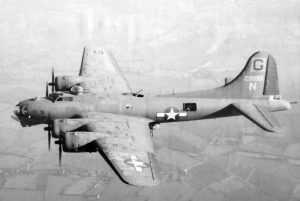 capable of making the flight around the world in just 21 years is truly outstanding. The circumnavigation mission was first presented to Douglas Aircraft Company in 1923, when the US Army Air Service, interested in carrying out a mission to circumnavigate the Earth for the first time by aircraft, approached Douglas Aircraft Company to present it to them. The mission was called “World Flight.” Donald Douglas proposed a modified Douglas DT to meet the Army’s needs. The two-place, open cockpit DT biplane torpedo bomber had previously been produced for the US Navy. The DTs were taken from the assembly lines at the company’s manufacturing plants in Rock Island, Illinois, and Dayton, Ohio, to be modified.
capable of making the flight around the world in just 21 years is truly outstanding. The circumnavigation mission was first presented to Douglas Aircraft Company in 1923, when the US Army Air Service, interested in carrying out a mission to circumnavigate the Earth for the first time by aircraft, approached Douglas Aircraft Company to present it to them. The mission was called “World Flight.” Donald Douglas proposed a modified Douglas DT to meet the Army’s needs. The two-place, open cockpit DT biplane torpedo bomber had previously been produced for the US Navy. The DTs were taken from the assembly lines at the company’s manufacturing plants in Rock Island, Illinois, and Dayton, Ohio, to be modified.
Four of these modified aircraft left Seattle, Washington, on April 6, 1924, flying west, and two of these returned there on September 28 to great fanfare. Unfortunately, one plane had been lost under fog conditions, and another was forced down over the Atlantic and sank. The DWC prototype was then rechristened and joined the other two in completing the North American leg of the flight. With the success of this flight, the Army Air Service ordered six similar aircraft as observation aircraft.
In 1934, Douglas produced a commercial twin-engined transport plane, the Douglas DC-2, which was followed by the famous DC-3 in 1936. The wide range of aircraft produced by Douglas included airliners, light and medium bombers, fighter aircraft, transports, reconnaissance aircraft, and experimental aircraft. While these were all important types of aircraft, it would really be the work they did during World War II, that really put  them on the map in my opinion. With so many young men heading off to war, the women really stepped up at this time and built many of the World War II planes. During that time, Douglas joined the BVD (Boeing-Vega-Douglas) consortium to produce the B-17 Flying Fortress. As far as I’m concerned, that was one of the greatest planes every produced. I suppose that sounds odd, considering that it was so long ago, but for its time, the B-17 was and really still is legendary. And while I don’t know if my dad had a part in building the B-17 Bomber, I know that he repaired them and knew them inside and out. I am proud of the work my dad did on the airplanes he helped to build, and proud of his time with Douglas Aircraft Company.
them on the map in my opinion. With so many young men heading off to war, the women really stepped up at this time and built many of the World War II planes. During that time, Douglas joined the BVD (Boeing-Vega-Douglas) consortium to produce the B-17 Flying Fortress. As far as I’m concerned, that was one of the greatest planes every produced. I suppose that sounds odd, considering that it was so long ago, but for its time, the B-17 was and really still is legendary. And while I don’t know if my dad had a part in building the B-17 Bomber, I know that he repaired them and knew them inside and out. I am proud of the work my dad did on the airplanes he helped to build, and proud of his time with Douglas Aircraft Company.
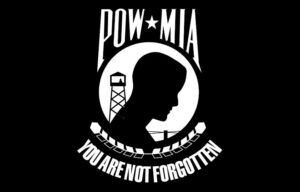 When a soldier goes missing in action, it becomes an unthinkable phenomenon for their family. Really, when anyone goes missing and can’t be found, it is unthinkable for the family, but for a soldier, it’s particularly strange, because we knew where they were and what they were doing, and their disappearance isn’t really connected with anything like an abduction. I suppose it could be classified that way, but Missing In Action (MIA), is not classified as an abduction, but rather an act of war. Often, they were killed in action, and someone other than their company took care of their body. Of course, there is also the possibility that they were taken prisoner of war, but when the prisoners are all released, and our loved one is not among them, we have to face the possibility that something else happened. Every war has its list of Prisoners Of War (POW), and its list of MIAs, and these are people that we hope will never be forgotten, so that maybe someday the truth about what happened can be found out. If they are forgotten, then it is a very real possibility that they will never be found.
When a soldier goes missing in action, it becomes an unthinkable phenomenon for their family. Really, when anyone goes missing and can’t be found, it is unthinkable for the family, but for a soldier, it’s particularly strange, because we knew where they were and what they were doing, and their disappearance isn’t really connected with anything like an abduction. I suppose it could be classified that way, but Missing In Action (MIA), is not classified as an abduction, but rather an act of war. Often, they were killed in action, and someone other than their company took care of their body. Of course, there is also the possibility that they were taken prisoner of war, but when the prisoners are all released, and our loved one is not among them, we have to face the possibility that something else happened. Every war has its list of Prisoners Of War (POW), and its list of MIAs, and these are people that we hope will never be forgotten, so that maybe someday the truth about what happened can be found out. If they are forgotten, then it is a very real possibility that they will never be found.
In every war, there are kind people who will bury the dead of the enemy right along with their own dead, but 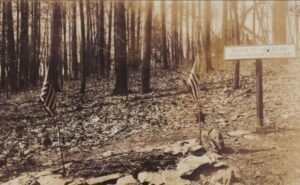 often they can’t read the names, so the dead are in an unmarked grave, possibly with their dog tags as the only definitive proof that the remains belong to that soldier. Some of those kind people have remembered where they buried the soldiers, and kept track of the proof of identity, so that maybe, somewhere down the road, they could reunite the soldier with his family…and some of those people have been returned to their families in recent years. The stories, when that happens, are so heart-warming. It reminds us once again, that there is good in this world, even if it’s harder to find these days.
often they can’t read the names, so the dead are in an unmarked grave, possibly with their dog tags as the only definitive proof that the remains belong to that soldier. Some of those kind people have remembered where they buried the soldiers, and kept track of the proof of identity, so that maybe, somewhere down the road, they could reunite the soldier with his family…and some of those people have been returned to their families in recent years. The stories, when that happens, are so heart-warming. It reminds us once again, that there is good in this world, even if it’s harder to find these days.
Of course, it is my opinion that no matter what, God knows where these lost ones are, and that someday people will be reunited with lost loved ones, either here on Earth, or later, in Heaven. That is something I have to believe when I think of anyone who has a lost loved one out there. I personally do not have a lost loved one out there…at least no one I knew personally. I have a great uncle (not sure how many greats) that went 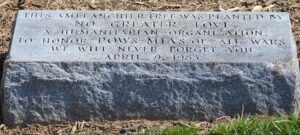 missing when he was forced into war as a result of the German government taking him in the middle of the night, but I never knew him personally. Nevertheless, I feel very sad for those people who have suffered such a loss as this. As of September 18, 2020, the American Battle Monuments Commission (ABMC) lists a total of 85,394 Americans MIA, including 4,422 from World War I, 71,692 from World War II, 7,717 from the Korean War, 1,561 from the Vietnam War. They don’t list any from other conflicts, whether there are missing ones or not.
missing when he was forced into war as a result of the German government taking him in the middle of the night, but I never knew him personally. Nevertheless, I feel very sad for those people who have suffered such a loss as this. As of September 18, 2020, the American Battle Monuments Commission (ABMC) lists a total of 85,394 Americans MIA, including 4,422 from World War I, 71,692 from World War II, 7,717 from the Korean War, 1,561 from the Vietnam War. They don’t list any from other conflicts, whether there are missing ones or not.
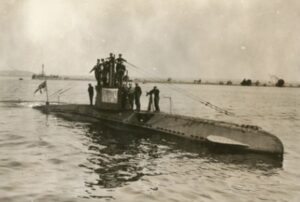 When a nation has a weapon that is so deadly to its enemy nations, those nations have no choice but to find a new way to beat that weapon. The German U-Boat was just such a weapon. Gliding along silently beneath the sea, the U-Boat put the ships of the Allied nations in constant and grave danger. That was one of the reasons that the British developed a fixation on their presence at sea. They depended on seaborne trade, and during World War I, the Germans were terrorizing that trade.
When a nation has a weapon that is so deadly to its enemy nations, those nations have no choice but to find a new way to beat that weapon. The German U-Boat was just such a weapon. Gliding along silently beneath the sea, the U-Boat put the ships of the Allied nations in constant and grave danger. That was one of the reasons that the British developed a fixation on their presence at sea. They depended on seaborne trade, and during World War I, the Germans were terrorizing that trade.
For much of Great Britain’s history, they enjoyed the luxury of having more battleships than the next two powers combined. For that reason, the Germans knew that they would have to concentrate their efforts on attacking vulnerable shipping lanes to disrupt the British war effort. They didn’t care if there were passengers on those ships. They didn’t care about loss of life or supplies. They had one plan…to dominate the seas. German submarines became a menace to the merchant navy. Something had to change, so the British came up with a plan to counter the U-boat threat. The plan involved disguising armed vessels as harmless trawlers to 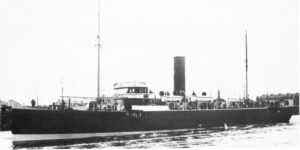 lure the submarines in and then wipe them out. The answer to the U-boat were disguised vessels…decoys, known as Q-ships.
lure the submarines in and then wipe them out. The answer to the U-boat were disguised vessels…decoys, known as Q-ships.
Knowing that the U-Boats were under orders to attack just about anything. The Q-ships hid naval guns behind pivoting panels. It was the Sun Tzu tenet of “hold out baits to entice the enemy.” The Q-ships pretended to be disabled and when the U-Boats show up for the kill, the Q-ships went into action. Guns and additional crew had been concealed by hinges that could be dropped at a moment’s notice. The U-boats of World War I had limited range and carrying capacity, so the captains were nervous about wasting their torpedoes. Also, while the U-Boats of World War II were more capable of lang periods of time submerged, the U-Boats of World War I, had limited capability, so they preferred to use the submarine’s main gun to subdue ships whenever possible.
As the U-Boats came into sight of the Q-ship, the Q-ship’s crew would pretend to panic and abandon the ship to 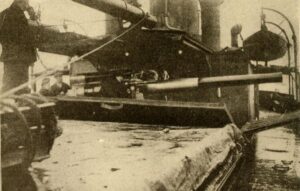 draw the submarine in close. The U-Boats, once lured in, were at the mercy of the Q-ships. The Q-ships began to drop their depth charges as soon as the submarine tried to escape. It was a dangerous game to play and required a brave crew to pull off the ruse, and it was not always successful. Some Q-ships were lost, but because of their efforts the threat of submarines in World War I were lessened. The plan was to try the tactic again in World War II, but ships were in very short supply. The tactic of using decoy ships was much more limited but was also used by the Germans and Americans. While it wasn’t a major tactical warfare practice during the two wars, it was effective while it was used.
draw the submarine in close. The U-Boats, once lured in, were at the mercy of the Q-ships. The Q-ships began to drop their depth charges as soon as the submarine tried to escape. It was a dangerous game to play and required a brave crew to pull off the ruse, and it was not always successful. Some Q-ships were lost, but because of their efforts the threat of submarines in World War I were lessened. The plan was to try the tactic again in World War II, but ships were in very short supply. The tactic of using decoy ships was much more limited but was also used by the Germans and Americans. While it wasn’t a major tactical warfare practice during the two wars, it was effective while it was used.
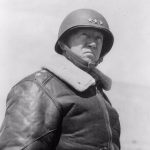 In the final years of World War II, both the Allied and Axis Powers knew that there was no chance of defeating Hitler without cracking his grasp on Western Europe, and both sides knew that Northern France was the obvious target for an amphibious assault. Hitler’s army seemed to be everywhere. That said, the Allied forces knew they had to come up with a way to “fool” the leader of the Third Reich. Hitler arrogantly thought that he knew what the Allied forces were planning, and that was the best way to create his downfall. The German high command assumed the Allies would cross from England to France at the narrowest part of the channel and land at Pas-de-Calais. The Allies used that to their advantage and decided on the beaches of Normandy…some 200 miles to the west. The beaches of Normandy could be taken as they were, but if the Germans added to their defense by moving their reserve infantry and panzers to Normandy from their garrison in the Pas-de-Calais region, the invasion would be a disaster.
In the final years of World War II, both the Allied and Axis Powers knew that there was no chance of defeating Hitler without cracking his grasp on Western Europe, and both sides knew that Northern France was the obvious target for an amphibious assault. Hitler’s army seemed to be everywhere. That said, the Allied forces knew they had to come up with a way to “fool” the leader of the Third Reich. Hitler arrogantly thought that he knew what the Allied forces were planning, and that was the best way to create his downfall. The German high command assumed the Allies would cross from England to France at the narrowest part of the channel and land at Pas-de-Calais. The Allies used that to their advantage and decided on the beaches of Normandy…some 200 miles to the west. The beaches of Normandy could be taken as they were, but if the Germans added to their defense by moving their reserve infantry and panzers to Normandy from their garrison in the Pas-de-Calais region, the invasion would be a disaster.
In what would become an ingenious plan, the Allied intelligence services created two fake armies to keep the Germans on their toes. One would wonder how they proposed to pull that off. The Allies created two “Ghost Armies.” One would be based in Scotland to create a supposed invasion of Norway and the other headquartered 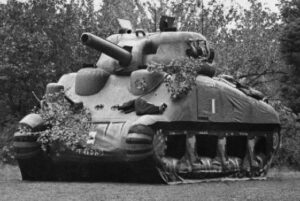 in southeast England to threaten the Pas-de-Calais. While the operation in Scotland relied mainly on fake radio traffic and the feeding of false information to double agents to create the impression of a substantial army, the southern “Ghost Army” had to seem much more real. The fortitude South was well within the range of prying German ears and eyes, so fake chatter alone would be uncovered too quickly. It had to look and sound like a substantial army was building up in southeast England. They needed boots on the ground there, without actually using too much of their precious manpower. That seems like a monumental task.
in southeast England to threaten the Pas-de-Calais. While the operation in Scotland relied mainly on fake radio traffic and the feeding of false information to double agents to create the impression of a substantial army, the southern “Ghost Army” had to seem much more real. The fortitude South was well within the range of prying German ears and eyes, so fake chatter alone would be uncovered too quickly. It had to look and sound like a substantial army was building up in southeast England. They needed boots on the ground there, without actually using too much of their precious manpower. That seems like a monumental task.
Enter George and his imaginary men. Patton was put in charge of leading a fake army, commonly known as the “Ghost Army” as part of a massive counterintelligence operation preceding D-Day. The “Ghost Army” was an army of inflatable tanks, rubber airplanes, and fake radio signals designed to trick the German army. The mission was insanely successful. The “Ghost Army” was a United States Army tactical deception unit used during World War II officially known as the 23rd Headquarters Special Troops. The 1100-man unit was given a 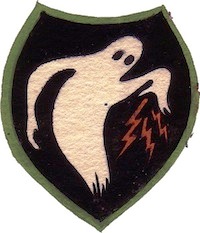 unique mission within the Allied Army. Their orders…impersonate other Allied Army units to deceive the enemy. It was simple, but it wouldn’t be easy.
unique mission within the Allied Army. Their orders…impersonate other Allied Army units to deceive the enemy. It was simple, but it wouldn’t be easy.
By the evening of June 6, 1944, in what would become known as D-Day, the First Army landed at Normandy. The battle was on, and without the extra troops Hitler might have sent if he wasn’t misled so completely. By June 23, 1945, the 23rd Headquarters Special Troops was on its way home after having served with four US armies through England, France, Luxembourg, Belgium, Holland, and Germany. During their tenure, they put on what many would call a “traveling road show” utilizing inflatable tanks, sound trucks, fake radio transmissions, scripts, and pretense. They staged more than 20 battlefield deceptions, often operating very close to the front lines. While their missions and their work were amazing, their story was kept secret for more than 40 years after the war, until it was declassified in 1996.
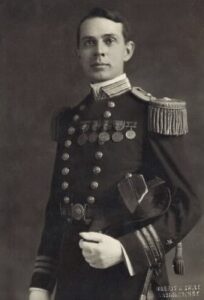 The United States Navy ship USS Knox (FF-1052) was named for Commodore Dudley Wright Knox, who was an officer in the United States Navy during the Spanish-American War and World War I. Born in Fort Walla Walla, Washington, on June 21, 1877, Knox was also a prominent naval historian. For many years he oversaw the Navy Department’s historical office, now called the Naval Historical Center. I can’t say for sure, nor exactly how, but I suspect that Dudley Wright Knox is somehow related to my husband, Bob Schulenberg’s Knox side of the family. That will be a subject I will need to explore further in the future.
The United States Navy ship USS Knox (FF-1052) was named for Commodore Dudley Wright Knox, who was an officer in the United States Navy during the Spanish-American War and World War I. Born in Fort Walla Walla, Washington, on June 21, 1877, Knox was also a prominent naval historian. For many years he oversaw the Navy Department’s historical office, now called the Naval Historical Center. I can’t say for sure, nor exactly how, but I suspect that Dudley Wright Knox is somehow related to my husband, Bob Schulenberg’s Knox side of the family. That will be a subject I will need to explore further in the future.
Knox attended school in Washington DC and graduated from the United States Naval Academy on June 5, 1896. Following his graduation, he served in the Spanish-American War aboard the screw steamer Maple in Cuban waters. A screw steamer or screw steamship is an old term for a steamship or steamboat powered by a steam engine, using one or more propellers…also known as screws…to propel it through the water. These ships were nicknamed iron screw steam ship.
His was a long and distinguished career. During the Philippine-American War, Knox commanded the gunboat Albay, and during the Chinese Boxer Rebellion, the gunboat Iris. He then commanded three of the Navy’s first destroyers…Shubrick, Wilkes, and Decatur. Following his attendance and graduation from the Naval War College in 1912–13, Knox became the aide to Captain William Sims, commanding the Atlantic Torpedo Flotilla. During the cruise of the “Great White Fleet,” he was sent around the world by President Theodore Roosevelt, as an ordnance officer on the battleship Nebraska (BB-14).
He took the lead in developing naval operational doctrine when he published an article of great influence in the US Naval Institute Proceedings in 1915. He was Fleet Ordnance Officer in both the Atlantic and the Pacific, serving in the Office of Naval Intelligence, and commanding the Guantanamo Bay Naval Station. The job of a Fleet Ordnance Officers is to ensure that weapons systems, vehicles, and equipment are ready and available…and in perfect working order, at all times. These officers also manage the developing, testing, fielding, handling, storage, and disposal of munitions. In November 1917, Knox joined the staff of, by then, Admiral William Sims, Commander of US Naval Forces in European Waters. Knox earned the Navy Cross for “distinguished service” while serving as Aide in the Planning Section and later in the Historical Section. He was promoted to Captain on 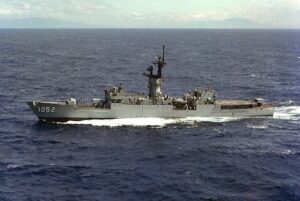 February 1, 1918. In March 1919, Knox returned to the United States. He served for a year on the faculty of the Naval War College, where he was a key figure on the Knox-King-Pye Board that examined professional military education. In 1920–21, he commanded the armored cruiser Brooklyn (ACR-3), then the protected cruiser Charleston (C-22) before resuming duty in the Office of the Chief of Naval Operations.
February 1, 1918. In March 1919, Knox returned to the United States. He served for a year on the faculty of the Naval War College, where he was a key figure on the Knox-King-Pye Board that examined professional military education. In 1920–21, he commanded the armored cruiser Brooklyn (ACR-3), then the protected cruiser Charleston (C-22) before resuming duty in the Office of the Chief of Naval Operations.
Also in 1920, Knox first began his work as a naval publicist, serving as naval editor of the Army and Navy Journal until 1923. He then became the naval correspondent of the Baltimore Sun in 1924 – 1946, and naval correspondent of the New York Herald Tribune in 1929. While he was transferred to the Retired List of the Navy on October 20, 1921, he actually and strangely continued on active duty, serving simultaneously as Officer in Charge, Office of Naval Records and Library, and as Curator for the Navy Department. Knox played a key role in creating the Naval Historical Foundation. Early in World War II, he was assigned additional duty as Deputy Director of Naval History.
In a career that spanned half of a century, Knox’s leadership inspired diligence, efficiency, and initiative while he guided, improved, and expanded the Navy’s archival and historical operations. Knox had personal connections to President Roosevelt, Fleet Admiral Ernest J King, and other senior leaders in the Navy Department. These relationships allowed him to play an instrumental role, albeit behind the scenes in the years leading up to and during World War II.
Knox published a number of writings and several books…including his first book “The Eclipse of American Sea Power” (1922) and “A History of the United States Navy” (1936). “A History of the United States Navy” is recognized as “the best one-volume history of the United States Navy in existence.” Through his personal connection with President Roosevelt, he was able to publish key, multi-volume collections of documents on 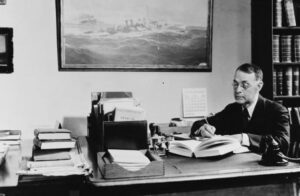 naval operations in The Quasi-War with France in 1798–1800, the first Barbary war and the second Barbary War…stories that may not have been told, had he not taken the initiative.
naval operations in The Quasi-War with France in 1798–1800, the first Barbary war and the second Barbary War…stories that may not have been told, had he not taken the initiative.
November 2, 1945, found Knox promoted to Commodore, and awarded the Legion of Merit for “exceptionally meritorious conduct” while directing the correlation and preservation of accurate records of the US naval operations in World War II, thus protecting this vital information for posterity. Finally, on June 26, 1946, Knox was relieved of all active-duty work. He died in Bethesda, Maryland, on June 11, 1960. His cause of death is listed as unknown. He was 83 years old.

 The cold war was one of the strangest times in world history. It wasn’t a war…exactly, but a period of geopolitical tension between the United States and the Soviet Union and their respective allies, the Western Bloc, and the Eastern Bloc, which began following World War II. While the war did not really “act” like a war, at least 389 soldiers were killed in the line of duty, as estimated by the American Cold War Veterans. These casualties were the result of planes being shot down by the Communist forces of the Soviet Union. One such plane was an American Navy P2V-3W was shot down near Vladivostok over the Sea of Japan by Soviet forces in November of 1951. The P2V-3W exploded off the coast, and the crew of 10 American soldiers was reported as missing. The Soviets accused the crew of gathering intelligence, and the Americans claimed that the mission was related to weather reconnaissance. The truth may never be really known. There were many other hazards that Americans were exposed to during the conflict. An estimated 400,000 people were subject to harm from toxins, which killed more than half of those who were exposed to them. Several thousand soldiers also lost their lives during these years in training accidents and friendly-fire incidents. So, while there were never any “battles” there were losses.
The cold war was one of the strangest times in world history. It wasn’t a war…exactly, but a period of geopolitical tension between the United States and the Soviet Union and their respective allies, the Western Bloc, and the Eastern Bloc, which began following World War II. While the war did not really “act” like a war, at least 389 soldiers were killed in the line of duty, as estimated by the American Cold War Veterans. These casualties were the result of planes being shot down by the Communist forces of the Soviet Union. One such plane was an American Navy P2V-3W was shot down near Vladivostok over the Sea of Japan by Soviet forces in November of 1951. The P2V-3W exploded off the coast, and the crew of 10 American soldiers was reported as missing. The Soviets accused the crew of gathering intelligence, and the Americans claimed that the mission was related to weather reconnaissance. The truth may never be really known. There were many other hazards that Americans were exposed to during the conflict. An estimated 400,000 people were subject to harm from toxins, which killed more than half of those who were exposed to them. Several thousand soldiers also lost their lives during these years in training accidents and friendly-fire incidents. So, while there were never any “battles” there were losses.
Because of the Nazi loss in World War II, and the surrender in 1945, the nation’s capital, Berlin, was divided into four sections, with the Americans, British, and French controlling the western region, and the Soviets controlling the eastern region. The three western sections came together as the Federal Republic of Germany (West Germany). East Germany became the German Democratic Republic in October of that same year. With tensions mounting, the border between the two new countries was closed in 1952, and by the following year East Germans were prosecuted if they left their country without permission. The situation grew worse when in August 1961, the Berlin Wall was erected by the East German government to prevent its citizens from escaping to the West. People were trying to escape every day, and between 1949 and night the wall went up, an estimated 2.5 million East Germans fled to the West.
By the time President Ronald Reagan was in office, the Cold War had started to really get old. Something had to change, and Reagan was determined to do something to stop the feuding. Like all presidents, part of keeping the people informed on matters of importance is making speeches, and on June 12, 1987, President Reagan made one of his most famous Cold War speeches, when he issued a challenge to Soviet Leader Mikhail Gorbachev to “tear down” the Berlin Wall. With the Berlin Wall behind him, Reagan said, “There is one sign the Soviets can make that would be unmistakable, that would advance dramatically the cause of freedom and peace.” He then called upon his Soviet counterpart: “Secretary General Gorbachev, if you seek peace—if you seek prosperity for the Soviet Union and Eastern Europe—if you seek liberalization: come here, to this gate. Mr. Gorbachev, open this gate. Mr. Gorbachev, tear down this wall.” The speech was also intended to ask Gorbachev to undertake serious arms reduction talks with the United States.
Many people thought that Reagan’s speech as a dramatic appeal to Gorbachev to renew negotiations on nuclear arms reductions, but it was also a reminder that despite Gorbachev’s public statements about a new 
 relationship with the West, the United States also wanted to see action taken to lessen Cold War tensions. The people of East Berlin just wanted freedom, and two years later, on November 9, 1989, East and West Germans got their way when the people broke down the infamous wall between East and West Berlin. Germany was officially reunited on October 3, 1990.
relationship with the West, the United States also wanted to see action taken to lessen Cold War tensions. The people of East Berlin just wanted freedom, and two years later, on November 9, 1989, East and West Germans got their way when the people broke down the infamous wall between East and West Berlin. Germany was officially reunited on October 3, 1990.
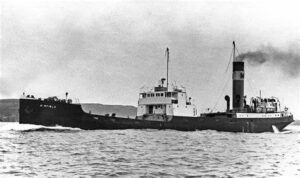 Shipwrecks have always intrigued me. Of course, you always hope that everyone got out alive, but the unfortunate truth is that usually that is not the case. Most shipwrecks sink to the bottom of the ocean, and often it takes years to even fins them. That was not the case with the SS Ayrfield, as well as a couple of other ships that “sank” in plain sight.
Shipwrecks have always intrigued me. Of course, you always hope that everyone got out alive, but the unfortunate truth is that usually that is not the case. Most shipwrecks sink to the bottom of the ocean, and often it takes years to even fins them. That was not the case with the SS Ayrfield, as well as a couple of other ships that “sank” in plain sight.
The SS Ayrfield was built in 1911, and it really didn’t sink. The plan was for it to be decommissioned and scrapped. The SS Ayrfield’s fate was sealed. She had served faithfully for 60 years, having been built in Scotland and sailed to Australia. She was used as a transport supply boat to US troops in the Pacific in World War II, and then retired. She was then used to run coal from Newcastle to Sydney for the rest of her working life. She was finally sent to Homebush Bay, which is where the old marine wrecking yards were. Ships didn’t come back from Homebush Bay. That feels a little sad to me. The plan was to scrap the ship, but that wasn’t exactly what happened.

As the ships sat rusting, waiting for the final scrapping, somehow it just didn’t happen. As they sat there, their insides slowly became completely colonized by mangrove trees. Branches and bark replaced the railings and ropes. The trees have taken root and as they have grown, they have created a giant leafy dome over the slowly disappearing hull. The ships have become known as the “Floating Forest” for obvious reasons, and just like a forest, their beauty is amazing.
Homebush Bay is actually home to the remains of the SS Ayrfield, as well as her neighbors, SS Mortlake Bank, steam tugboat SS Heroic, and boom defense vessel HMAS Karangi, all of which were broken up in the early 1970s. It is thought that there may be as many as seven ships in the bay. They now lie near the south-western shore of the bay, and they are completely visible from land and the hundreds of homes just a short distance away. Some people consider the ship graveyard, a little creepy, but since these weren’t sinkings with a loss of life, I think they are very cool.
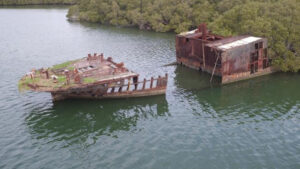
Unfortunately, during the 20th century, Homebush Bay was a heavy industry center, home to many industrial facilities. When industrial operations scaled down, the bay became a dumping ground for a large range of unwanted material…from waste to broken up ships, even toxic industrial waste. Union Carbide had manufactured chemicals, including Agent Orange, on the site and dioxins produced as a byproduct were buried in landfill or left in drums. The area has been in the process of being reclaimed, but fishing is prohibited, and I would not want to go in the water. It just doesn’t seem safe…even if it is beautiful.
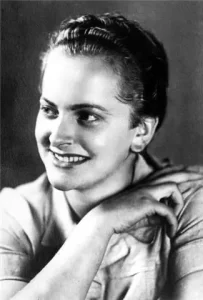
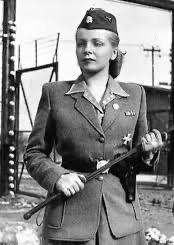 Raised by farming parents, who hated Nazis and all that they stood for, didn’t stop Irma Grese from wanting to join the Bund Deutscher Mädel or League of German Girls. Nevertheless, her father forbade it. Irma Elisabeth Ilse Ida Grese was born to Berta Grese and Alfred Grese, both dairy workers, on October 7, 1923. She was the third of five children (three girls and two boys). While Irma was an “angelic” looking girl with blond hair and blue eyes, there was something else living behind those eyes, a determination to get what she wanted…no matter the cost. In 1938 at the age of 15, Irma left school and worked as an assistant nurse in the sanatorium of the SS.
Raised by farming parents, who hated Nazis and all that they stood for, didn’t stop Irma Grese from wanting to join the Bund Deutscher Mädel or League of German Girls. Nevertheless, her father forbade it. Irma Elisabeth Ilse Ida Grese was born to Berta Grese and Alfred Grese, both dairy workers, on October 7, 1923. She was the third of five children (three girls and two boys). While Irma was an “angelic” looking girl with blond hair and blue eyes, there was something else living behind those eyes, a determination to get what she wanted…no matter the cost. In 1938 at the age of 15, Irma left school and worked as an assistant nurse in the sanatorium of the SS.
As I looked at Irma’s life, I wondered how she could have possibly gone in such a horrific direction with the parents she had. Then, I realized that in Germany in the 1930s, parents were quickly losing the right to raise their own children. They had no control over the education process, and in fact, the Nazi regime was quickly making the children believe that their parents were uneducated and stupid. The Nazi regime backed the “right” of the children to choose their destiny…provided it was “in sync” with the Nazi agenda. In 1936, her mother died by suicide after drinking hydrochloric acid following the discovery of Alfred’s affair with the local pub owner’s daughter. This might have contributed to Irma’s coming disobedience.
Despite Alfred, her farmer father’s objections, Irma was determined to join the Nazi party, because of the opportunity to become a nurse that they were offering her. She began studying at Hohenlychen, a SS hospital as an assistant nurse, in 1939. During her time there, she worked with Dr Karl Gebhardt, who performed medical experiments on patients, but he was unsuccessful at nursing and moved on to be a machinist. Once she was 18, she joined the Aufseherinnen SS and, after passing the necessary examinations, entered training at Ravensbrück. At Ravensbrück, Irma trained for three weeks (the program was a month, but Irma was an eager learner, and so went through it in three weeks). It is believed that she also had numerous relationships with male officers, which may have helped to “cut down” on her education time.
In 1943, Irma was sent to Auschwitz-Birkenau to guard female prisoners and was promoted the following year to the second-highest position within the Aufseherinnen at the camp. Due to her transfer, Irma had a falling out with her father, as he had been vehemently opposed to her joining the SS entourage, and he expelled her from the house. She oversaw 30,000 female prisoners at Auschwitz-Birkenau, and she was known to be brutal. The inmates at Auschwitz nicknamed her The Hyena of Auschwitz…probably because of the fact that she delighted in their pain. She wore heavy boots, carried a whip, and a pistol. While her appearance was that of a kindly person, she was known to have an affinity for kicking and beating prisoners, walking around camp with two hungry dogs trained to kill, and generally inflicting pain upon anyone who committed the slightest offense. She took pleasure in having the camp doctor operate on prisoners without anesthetic and, according to Dr Gisella Perl (the woman who performed an abortion for Irma on one occasion), she enjoyed the “sight of this human suffering. Her tense body swung back and forth in a revealing, rhythmical motion. Her cheeks were flushed and her wide-open eyes had the rigid, staring look of complete sexual paroxysm.”
Irma was transferred to Ravensbrück in January 1945, before being sent to Bergen-Belsen in March…where 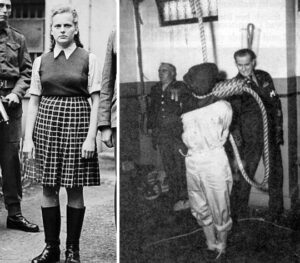
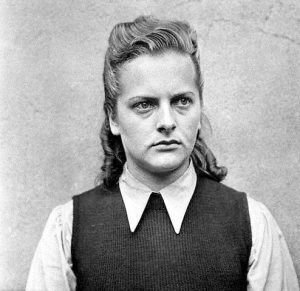 her brutal behavior continued. She enjoyed torturing the women under her control. She made women kneel for long periods of time, or hold large rocks over their heads, or stand in the snow or rain for hours. She felt no pity. Irma was captured by British soldiers in April 1945 and put on trial soon after. She claimed that she was just following orders and serving the state. She showed no remorse…even as she was sentenced to hang. Irma was hanged on December 13, 1945. At the age of 22, she was the youngest Nazi criminal to be executed.
her brutal behavior continued. She enjoyed torturing the women under her control. She made women kneel for long periods of time, or hold large rocks over their heads, or stand in the snow or rain for hours. She felt no pity. Irma was captured by British soldiers in April 1945 and put on trial soon after. She claimed that she was just following orders and serving the state. She showed no remorse…even as she was sentenced to hang. Irma was hanged on December 13, 1945. At the age of 22, she was the youngest Nazi criminal to be executed.

